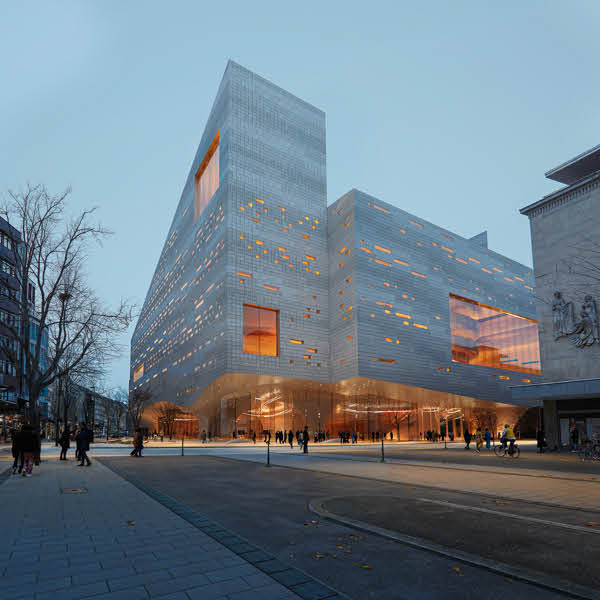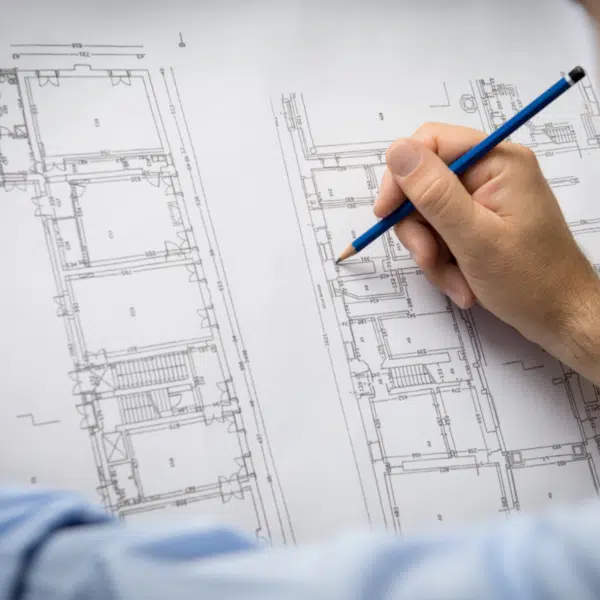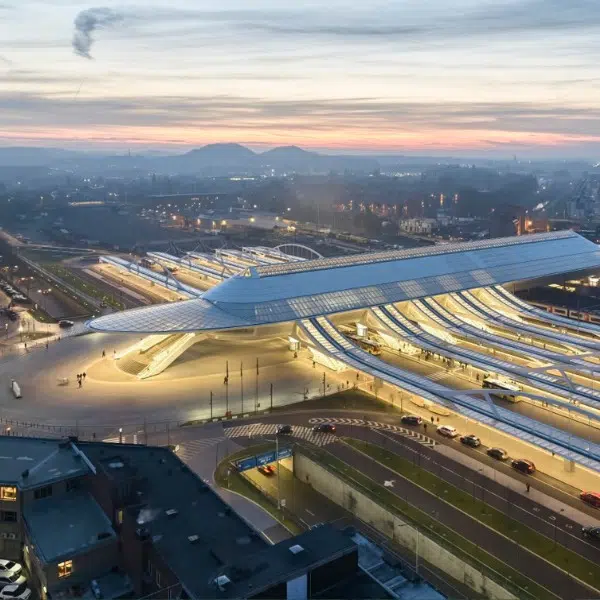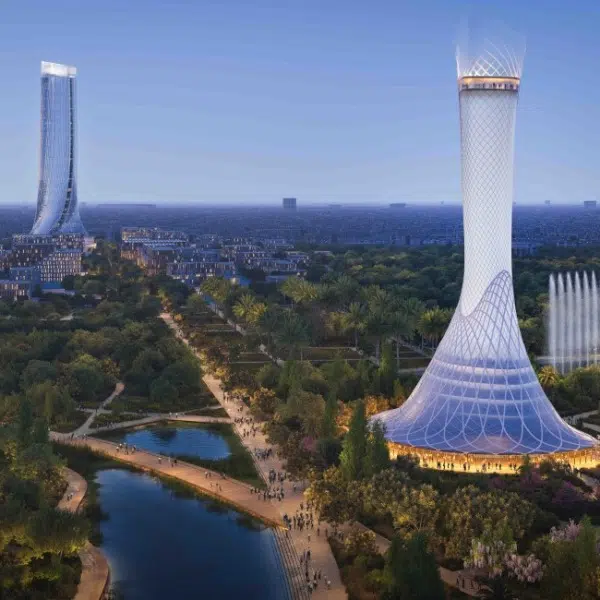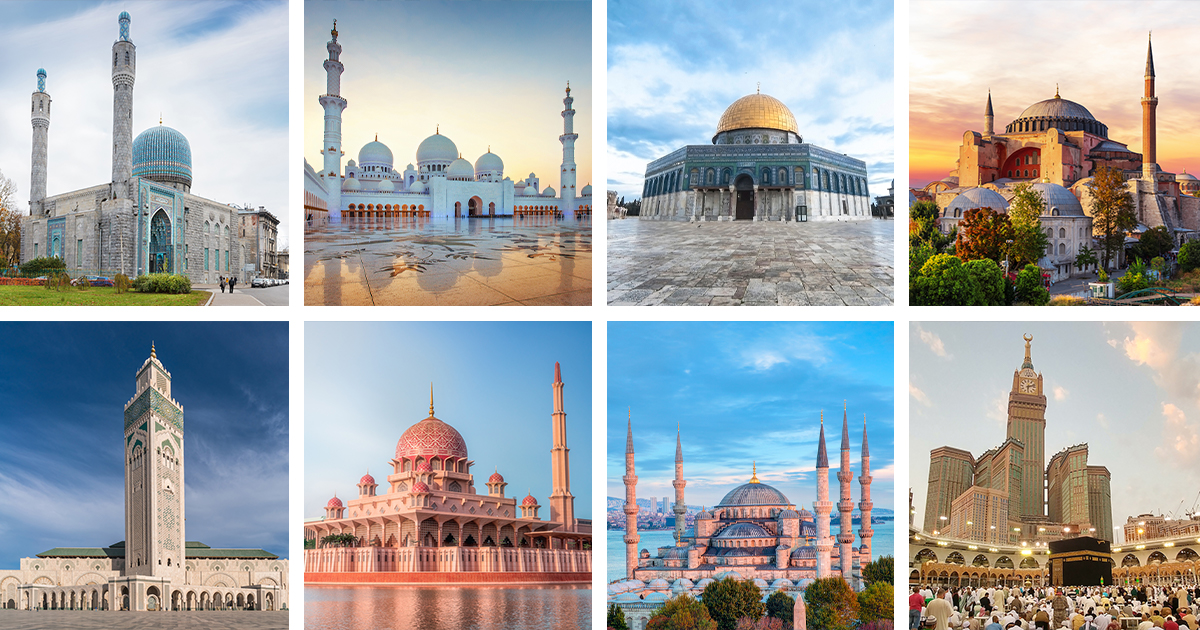
Left to Right: Saint Petersburg Mosque, Sheikh Zayed Grand Mosque, Dome of the Rock, Hagia Sophia, Hassan II Mosque, Putra Mosque, Sultan Ahmed Mosque, or the Blue Mosque, and the Great Mosque of Mecca.
Mosques are some of the most incredible examples of Islamic architecture in the world. Just as some of the best European architectural styles were perfected in cathedrals as devout Christians expressed their faith, Muslim faith led to equally jaw-dropping structures—some of which date back many centuries.
Interestingly, we may have a record of the first-ever mosque created. Believers consider Prophet Muhammad’s home in Medina—modern-day Saudi Arabia—to be the first mosque ever created. Some of the features of Muhammad’s home can still be found in the designs of mosques listed in this article. Still, other mosque features are influenced by many different styles, including Arabic, Moorish, Byzantine, and more.
Some common features of mosques include a central courtyard where worshippers can pray as well as minarets, or tall towers where prayers can be announced. On the interiors, mosques include a mihrab which is a wall niche that helps orient worshippers to Mecca. These are just some of the basic characteristics of a mosque, but many more elements can be found throughout these holy structures and these may vary depending on location and architectural influence.
Some of the mosques on this list are to be expected; they include some of the largest holy sites and some of the most expensive mosques in the world. Others are included because they are designed in an interesting combination of styles with influences coming from Middle Eastern, Asian, European, or other architectural styles.
Here are 10 incredible mosques around the world.
Sultan Ahmed Mosque (Blue Mosque)
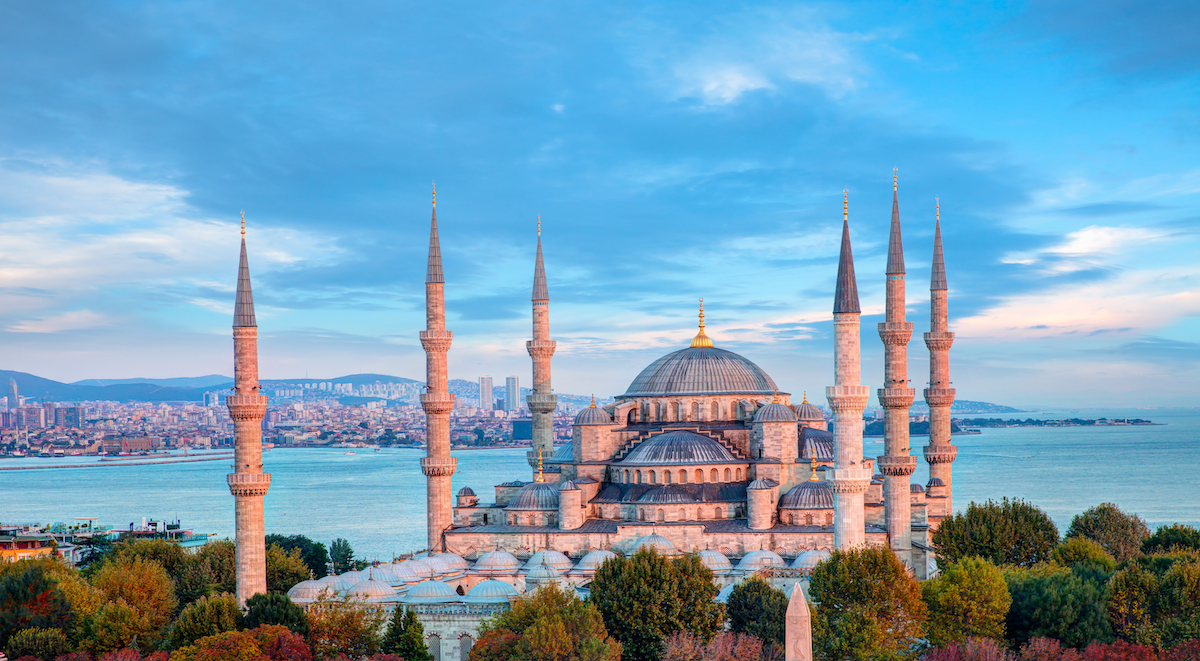
Sultan Ahmed Mosque, or the Blue Mosque, in Istanbul, Turkey (Photo: Stock Photos from muratart/Shutterstock)
Sultan Ahmed Mosque, or the Blue Mosque, is a massive structure in Istanbul, Turkey. It is an example of a Friday mosque or congregational place of worship that is designed to accommodate jumu’ah, special Friday noon prayers. The mosque was built at the beginning of the 17th century as a symbol of Ottoman power and was constructed near an existing and famous mosque also on this list, the Hagia Sophia.
The Sultan Ahmed Mosque includes six towering minarets, five main domes, and eight smaller domes. Sedefkâr Mehmed Ağa, the architect of the project, created a combination of traditional Islamic elements and Byzantine inspiration from the Hagia Sophia. He studied under Mimar Sinan, the master architect for sultan Suleiman the Magnificant and others, and adopted his master’s stance of using intricate details to create an overwhelmingly glorious interior. The most obvious example of this is in the 20,000 hand-painted tiles that adorn the upper structure of the mosque.
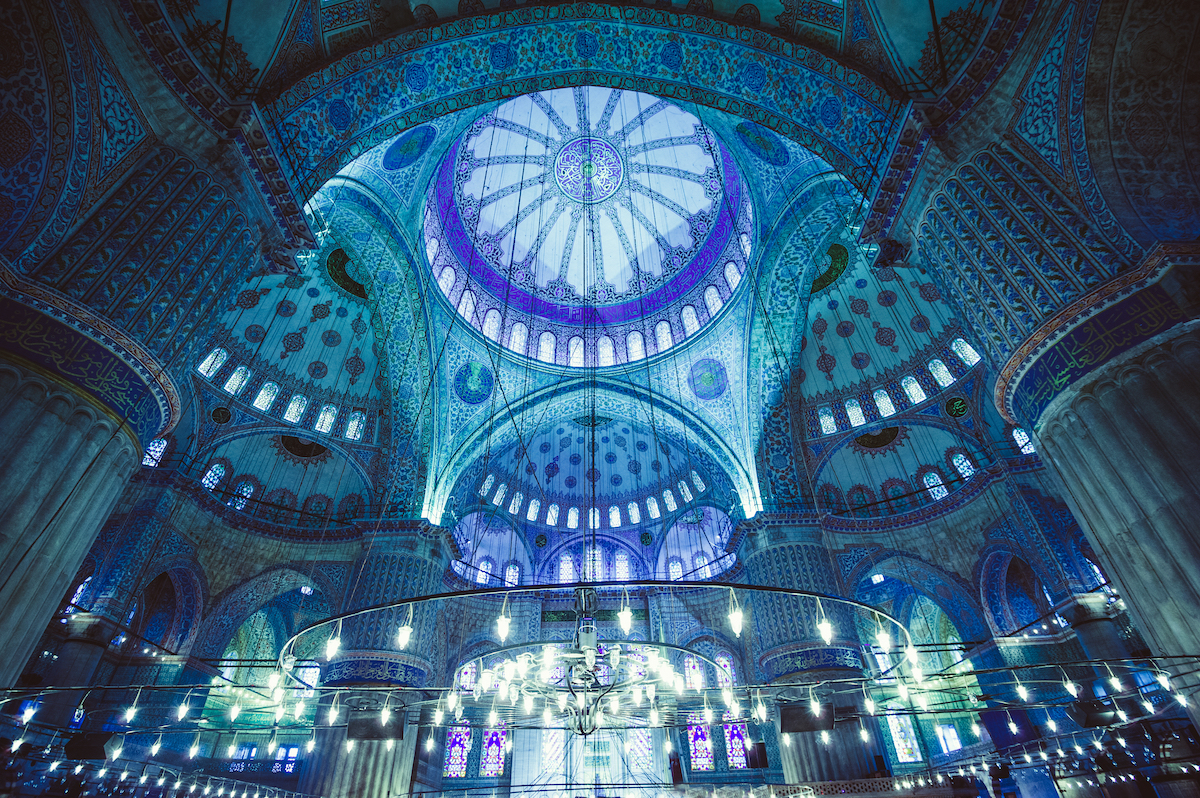
Sultan Ahmed Mosque, or the Blue Mosque, in Istanbul, Turkey (Photo: Stock Photos from Yarygin/Shutterstock)
Dome of the Rock
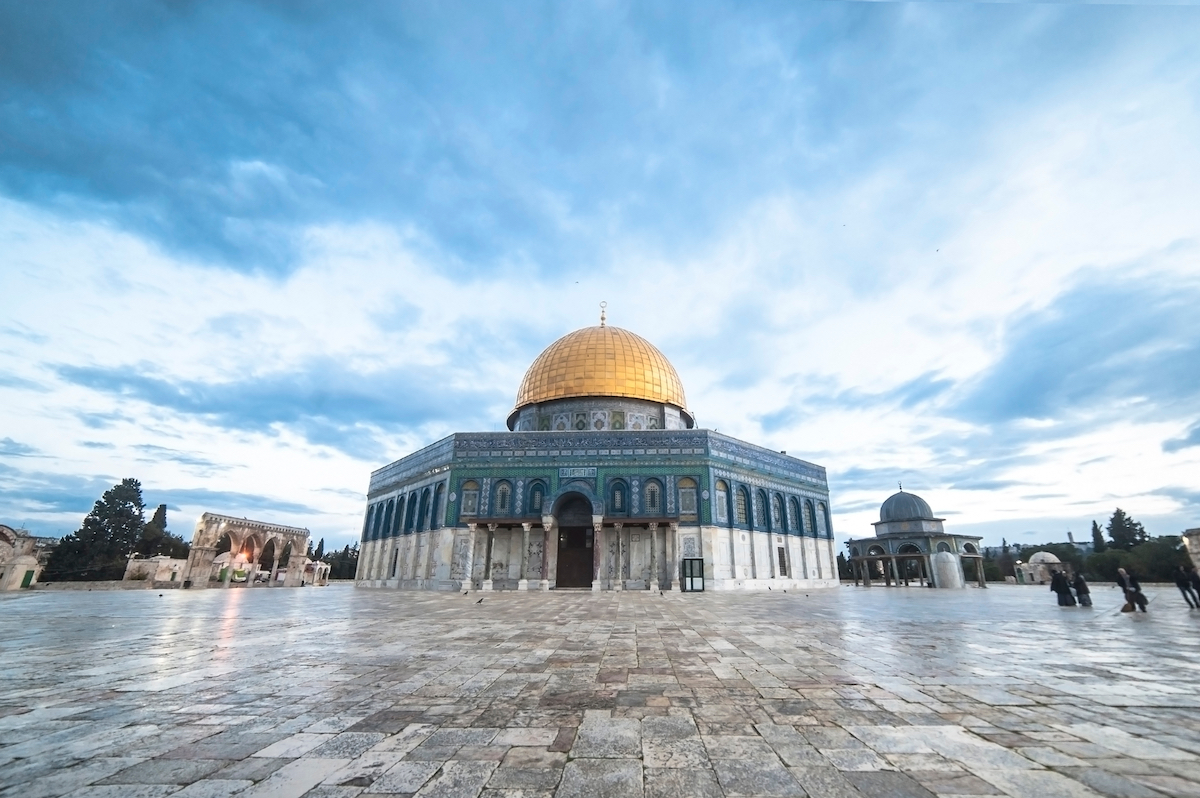
Dome of the Rock in Jerusalem (Photo: Stock Photos from Muhamad Taufiq Bin Azmi/Shutterstock)
The Dome of the Rock, or Qubbat al-Sakhra, is a sacred structure built around the Foundation Stone, where Judaism believes is the site of the world’s creation and where Islam believes is the site where Muhammad began his Night Journey or ascent to heaven. It is located on the Temple Mount, a hill in the Old City of Jerusalem that is sacred in Judaism, Christianity, and Islam.
The Dome of the Rock is one of many buildings on this list that has been considered sacred by many groups and for thousands of years. Before the dome was used as a Muslim place of worship, it was the site of the Jewish Temple of Solomon or the First Temple which was replaced with the Second Temple. The site was then used as a Roman temple built by Emperor Hadrian and later for the Church of the Holy Sepulchre built as Christian pilgrimage to Jerusalem developed.
The octagonal form that we now recognize as Dome of the Rock was likely constructed under Umayyad rule in the 7th century, though some believe that the dome was added to an existing Byzantine building. This may make sense since the architecture of the dome holds similar characteristics to other nearby Byzantine buildings, though this could have just been an inspiration used in a new building. Architectural inspiration from earlier buildings was certainly part of the Dome of the Rock’s design since the dome used the same dimensions as found in the earlier Christian Church of the Holy Sepulchre.
This was not the end of the holy site’s transition of ownership. The Dome of the Rock became a church once more when Jerusalem was captured in the Crusades—which escalated in part because of violence against pilgrims to Jerusalem. The city was recaptured by Saladin—the first sultan of Egypt and Syria and the leader of the military campaign against the Crusade—and the Dome of the Rock has remained a Muslim place of worship ever since.
The Dome of the Rock is known for its unique design that has inspired buildings of various faiths around the world. It is in the shape of an octagon in plan and is completed with a central dome on a tall drum—the vertical walls that elevate a dome. The dome is covered in mosaics that vary in age as a result of many renovations. The design element most recognizable on the Dome of the Rock is the blue glazed tiles that adorn the upper portion of the octagonal walls of the building.

Dome of the Rock in Jerusalem (Photo: Stock Photos from wong yu liang/Shutterstock)
Sheikh Zayed Grand Mosque
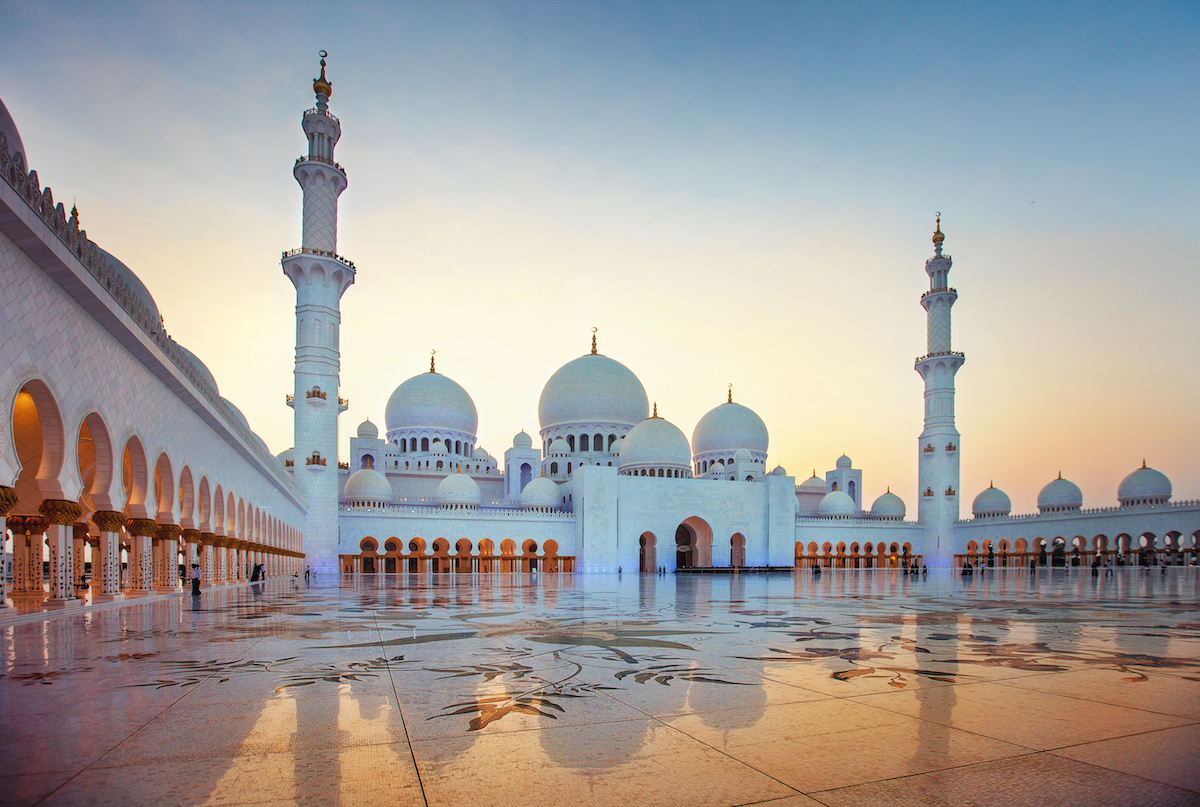
Sheikh Zayed Grand Mosque in Abu Dhabi, United Arab Emirates (Photo: Stock Photos from Elena Przhevalskaia/Shutterstock)
The Sheikh Zayed Grand Mosque is a relatively recent mosque completed in 2007. It is the largest mosque in all of the United Arab Emirates and was commissioned by Sheikh Zayed bin Sultan Al Nahyan to unite the diverse Islamic community with a modern mosque full of beautiful art and architecture.
The design of the mosque, like almost all of the buildings on this list, is a combination of different architectural styles and building elements directly inspired by specific mosques. Some of the clearest examples include the layout taken from the Badshahi Mosque, the Arab minarets, and the Moorish archways.
The mosque is recognizable for its bright white structure and beautifully tiled courtyard, holding up to the late Sheikh’s intention to unite worshippers with art.
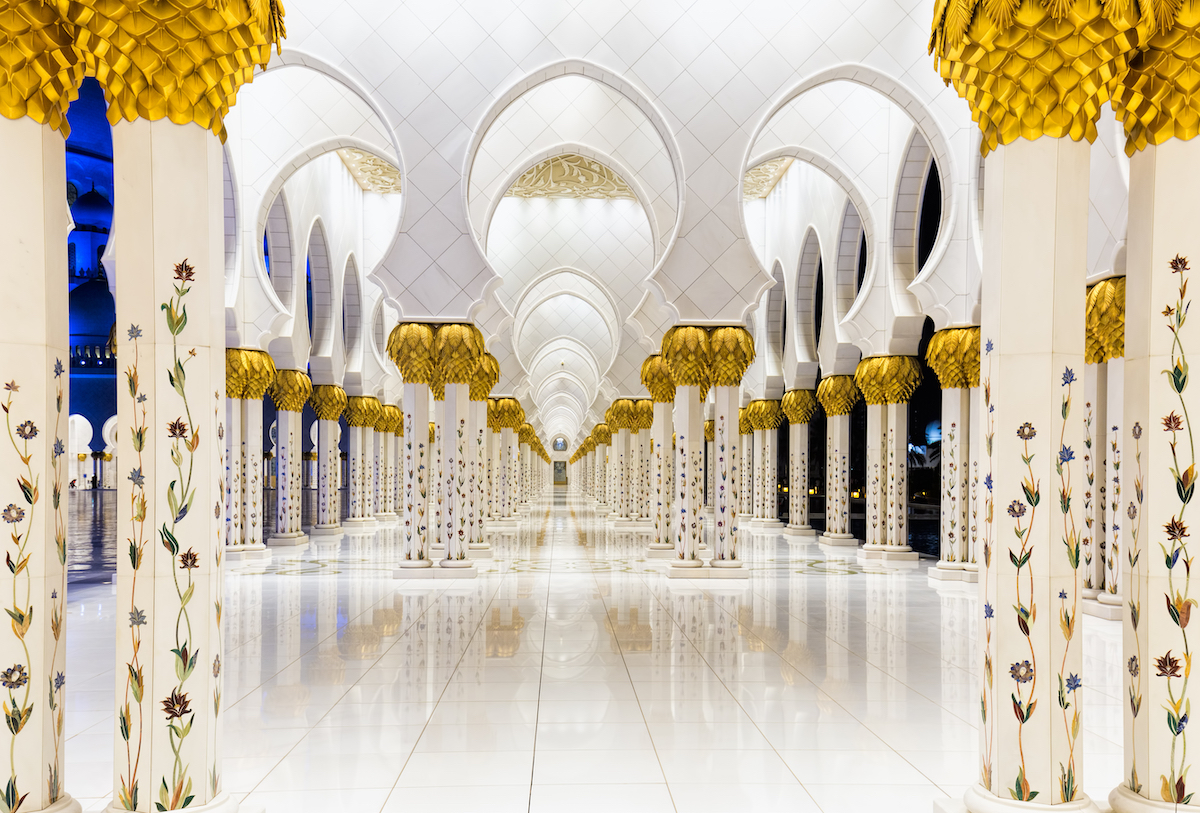
Sheikh Zayed Grand Mosque in Abu Dhabi, United Arab Emirates (Photo: Stock Photos from Faraz Azhar/Shutterstock)
Hagia Sophia
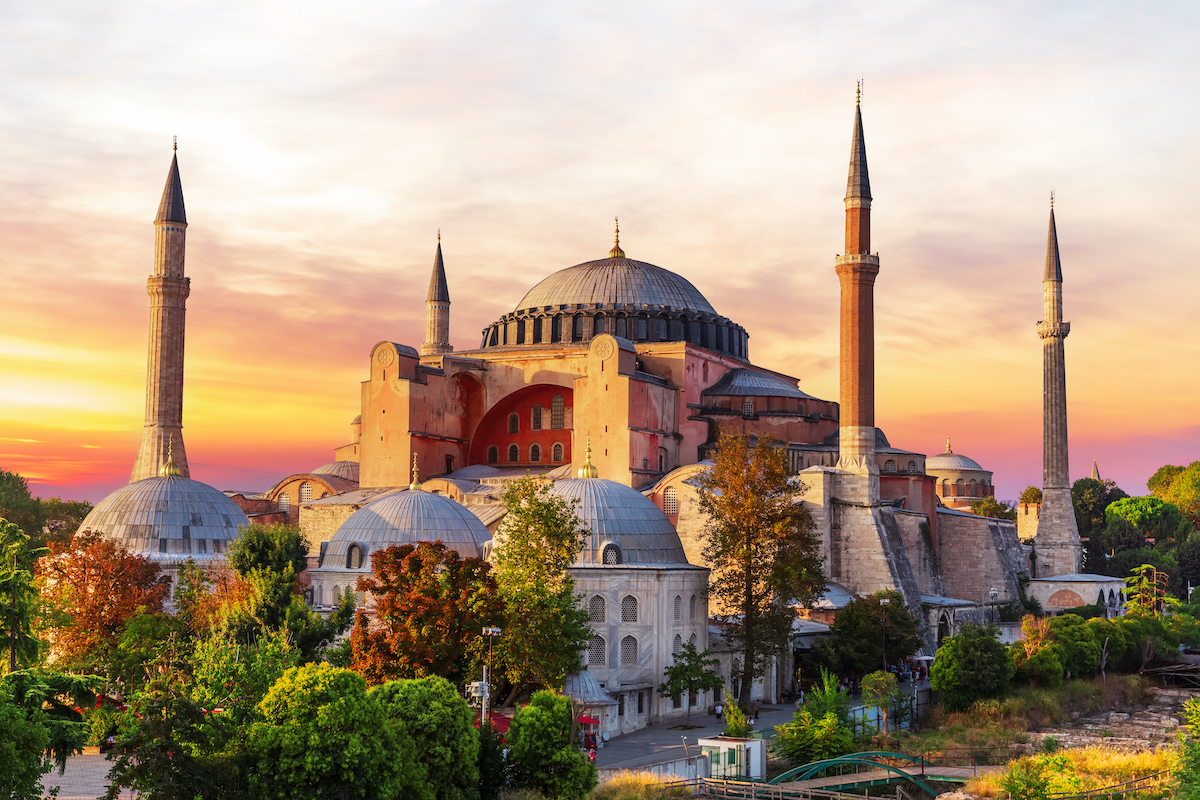
Hagia Sophia in Istanbul, Turkey (Photo: Stock Photos from AlexAnton/Shutterstock)
The Hagia Sophia, translated to “holy wisdom,” is one of the best examples of Byzantine architecture. It was designed by Isidore of Miletus and Anthemius of Tralles and has remained one of the most significant landmarks in Turkey for 1,500 years. Like some of the other mosques on this list, Hagia Sophia has changed hands many times and acted as a place of worship for multiple religions throughout the years.
Hagia Sophia stands on the site of what was once a pagan temple during the Roman Empire. Christian churches were built on the site starting in the 4th century, but the Byzantine designs that we know were first commissioned for the site by Byzantine Emperor Justinian I in 532. The construction began just after the Nika riots which destroyed the second Christian church that preceded the Hagia Sophia.
Justinian I imported exotic materials like verde antico, which created incredible green columns imported from Greece. The building spared no expense and was the largest and one of the most lavish Christian cathedrals until St. Peter’s Basilica was completed many centuries later in Rome. Throughout the years, many renovations were made to the Hagia Sophia, including repairs of damage made by earthquakes and other disasters. The church was badly damaged and the interiors were desecrated during the crusades. The Ottoman Empire would take control of the Hagia Sophia after the Byzantines.
The sultan was inspired by the beauty of Hagia Sophia and decided to convert the church into a mosque. Renovations to the building included the addition of a mihrab to face Mecca and a minbar for religious services, and a minaret. When the Ottoman empire fell, Hagia Sophia was transformed into a museum and the intricately designed building ceased to be an official place of worship for nearly a century. After years of worshippers attempting to return Hagia Sophia’s status as a place of worship, the museum was converted back to a mosque in July 2020.
You can read more about the Hagia Sophia on our post all about this incredible building.
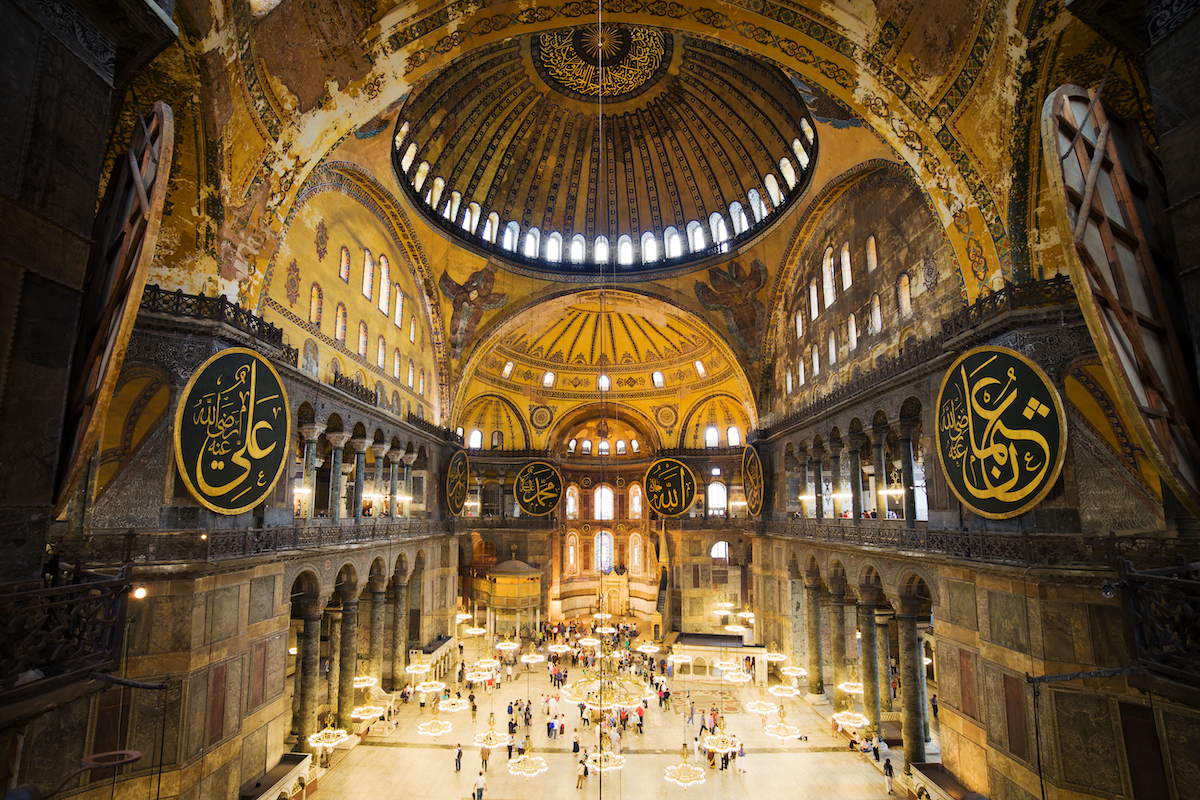
Hagia Sophia in Istanbul, Turkey (Photo: Stock Photos from Artur Bogacki/Shutterstock)
Masjid al-Haram (Great Mosque of Mecca)
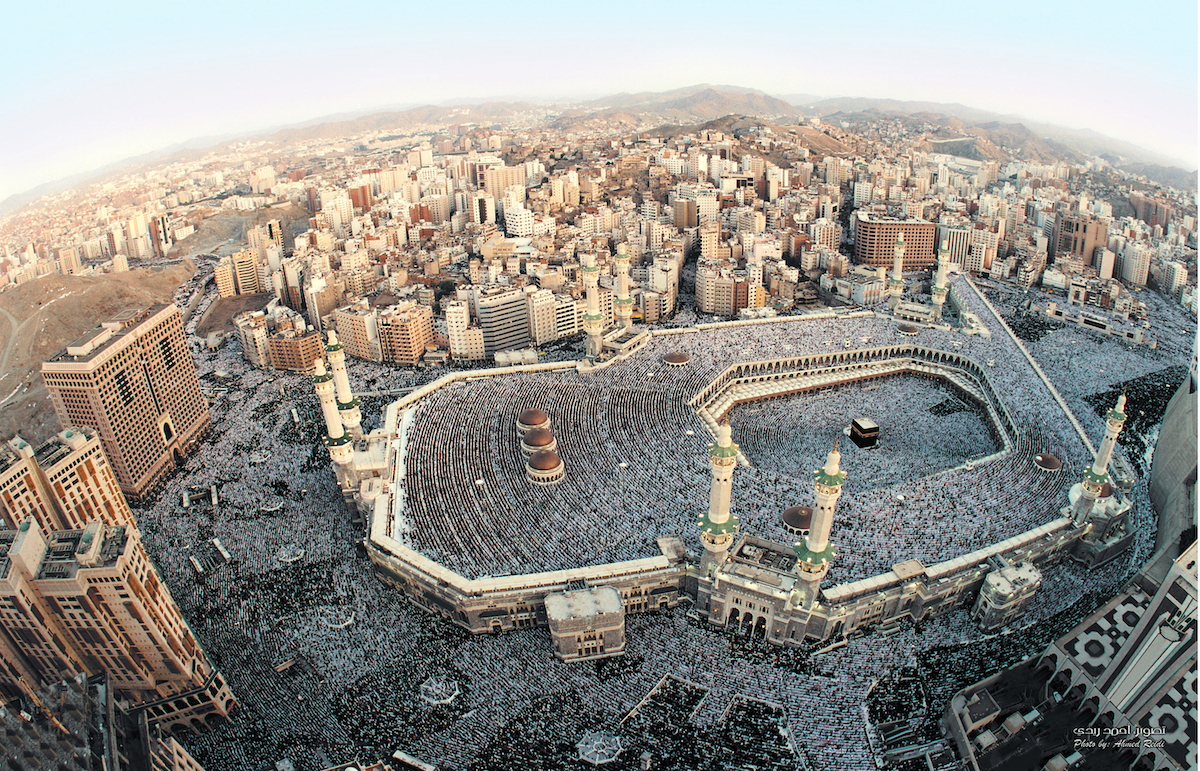
Masjid al-Haram, the Sacred Mosque or the Great Mosque of Mecca, in Mecca, Hejaz, Saudi Arabia (Photo: Stock Photos from Mohamed Reedi/Shutterstock)
The Great Mosque of Mecca, al-Masjid al- Harām, or the Holy Mosque, is the holiest mosque of Islam and arguably the most important building on this list. Millions of Muslims around the world travel every year to pray and complete their pilgrimage—the hajj—in the courtyard of the Great Mosque of Mecca.
The design of the Great Mosque is centered around the Kaaba—the most sacred site in all of Islam. Muslims believe that the Kaaba was first built by Ibrahim and his son Ismail—or Abraham and Ishmael as they are known in the Christian Bible. The current version of the building is made of gray stone and marble and is usually covered by a massive black cloth. So, it is only fitting that the Great Mosque of Mecca would be one of the most impressive mosques in the world to house such a sacred building as the Kaaba.
The mosque itself is the 8th largest building in the world and is even part of the same complex as the third tallest building in the world, the Abraj Al-Bait Clock Tower. Covered prayer areas surround the massive courtyard on every side for refuge after the pilgrims complete their seven rotations around the Kaaba and visits to other holy sites within the courtyard.
The Great Mosque of Mecca has experienced countless expansions and renovations throughout its long life, mostly to accommodate the growing number of worshippers visiting the site.
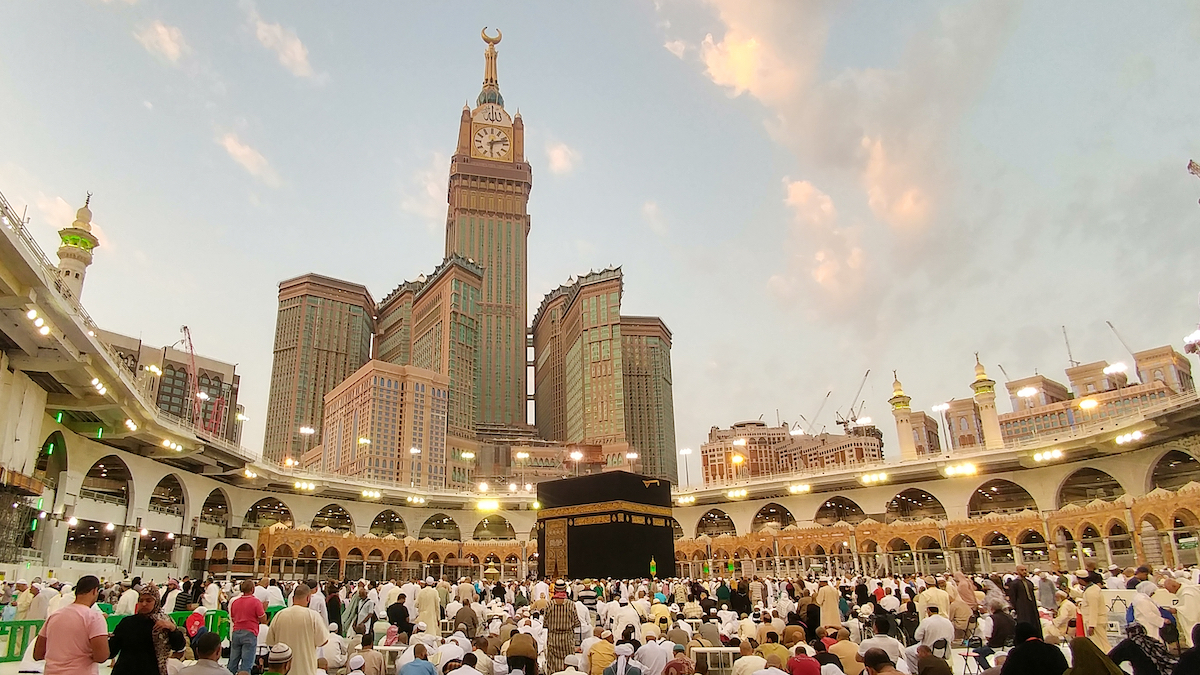
Masjid al-Haram, the Sacred Mosque or the Great Mosque of Mecca, in Mecca, Hejaz, Saudi Arabia (Photo: Stock Photos from SLSK Photography/Shutterstock)
Córdoba Mosque

Córdoba Mosque in Córdoba, Andalusia, Spain (Photo: Stock Photos from emperorcosar/Shutterstock)
The Mosque-Cathedral of Córdoba, or the Great Mosque of Córdoba, is technically no longer a mosque. Like some of the other mosques on this list, the building has been used as a sacred site for multiple religions. The first religious building on the site was probably a Catholic Christian Basilica called Saint Vincent of Saragossa, though there were, at one point, claims that a Roman temple may have been there earlier. The site was split between Christians and Muslims after the Umayyad conquest of Hispania—the conquest which destroyed the Visigothic Kingdom and brought Muslim influences far into western Europe.
The Muslim community grew and the basilica expanded until Abd al-Rahman I bought the Christian half of the site. This area was demolished and the Great Mosque of Córdoba began construction in 785. The architecture recalled its complicated history with influences coming from Roman architecture, Visigothic design (from the earlier church), and of course Umayyad principles.
Over the course of centuries, many renovations and expansions were carried out in the mosque, including an adjustment to better allow worshippers to face Mecca. Throughout all of these changes, the red and yellow double-tiered arches remained the same and help to make this mosque so recognizable and unique.
The mosque was transformed back to a Catholic church when it was conquered by King Ferdinand III in 1236. After this conversion, renovations varied widely in architectural styles including a Moorish-influenced funerary chapel, a Gothic nave, a Renaissance nave and transept, and more.
The Mosque-Cathedral of Córdoba is an important building on this list because it is a combination of so many architectural influences that tell a complicated story of faith and history.

Córdoba Mosque in Córdoba, Andalusia, Spain (Photo: Stock Photos from Songquan Deng/Shutterstock)
Hassan II Mosque
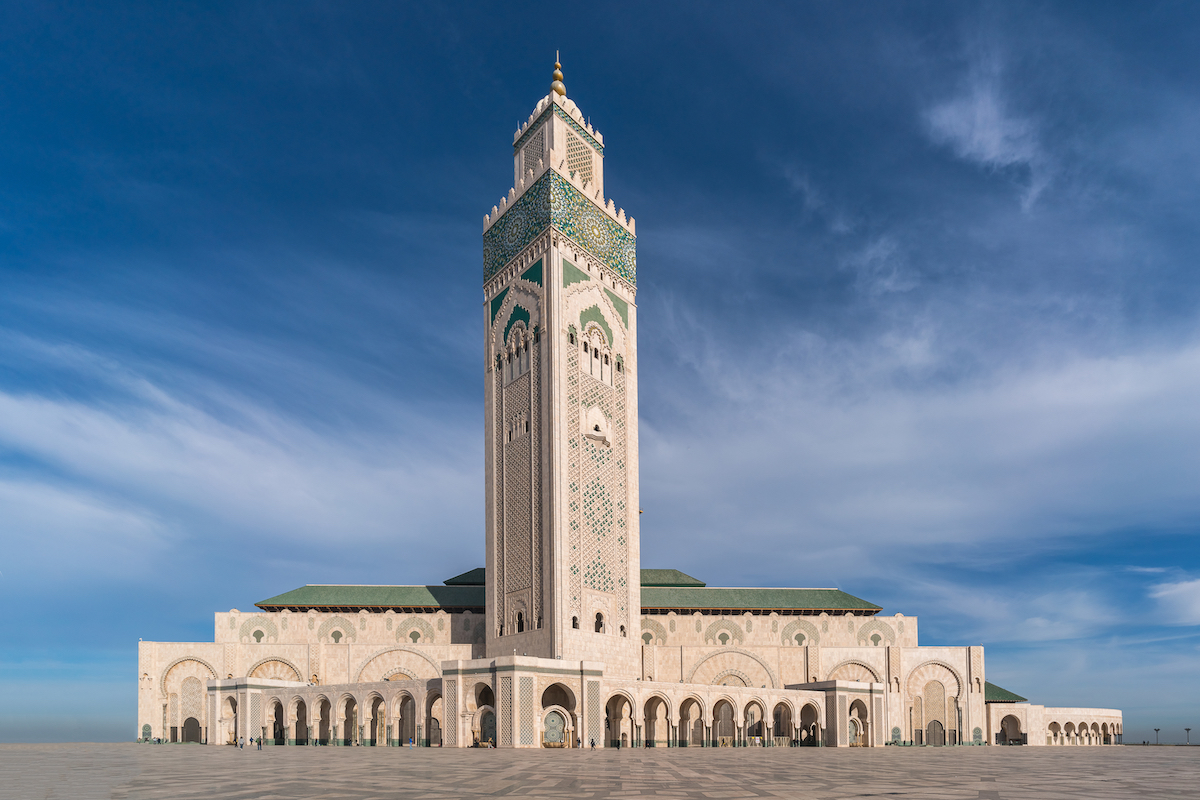
Hassan II Mosque in Casablanca, Morocco (Photo: Stock Photos from praphab louilarpprasert/Shutterstock)
The Hassan II Mosque is located in Casablanca, Morocco, and holds a few world records including the world’s second tallest minaret and being the second-largest practicing mosque in Africa. It is also the 7th largest mosque in the entire world. There is a laser at the top of the minaret which points towards Mecca, helping worshippers orient themselves in prayer.
The placement of this building along the Atlantic Ocean is significant to its history. King Hassan II, whom the mosque was named for, commissioned the place of worship in honor of the late King Mohammed V. Hassan II said of the mosque, “I want to build this mosque on the water because God’s throne is on the water. Therefore, the faithful who go there to pray, to praise the creator on firm soil, can contemplate God’s sky and ocean.”
French architect Michael Pinseau was chosen to work on the project and designed the building as a blend of Islamic, Moroccan, and Moorish architecture. Countless architectural influences can be found throughout the structure, including elements from the Dome of the Rock and the Great Mosque of Córdoba—both influential mosques on this list.
Much of the building was handmade. In fact, 6,0000 Moroccan artisans worked on the handmade mosaics, marble floors, columns, plaster details, and wood ceilings in the mosque—though the total number of workers was well over 30,000. After all of this care and attention to detail, it is still considered to be one of the biggest architectural projects ever built in Morocco.
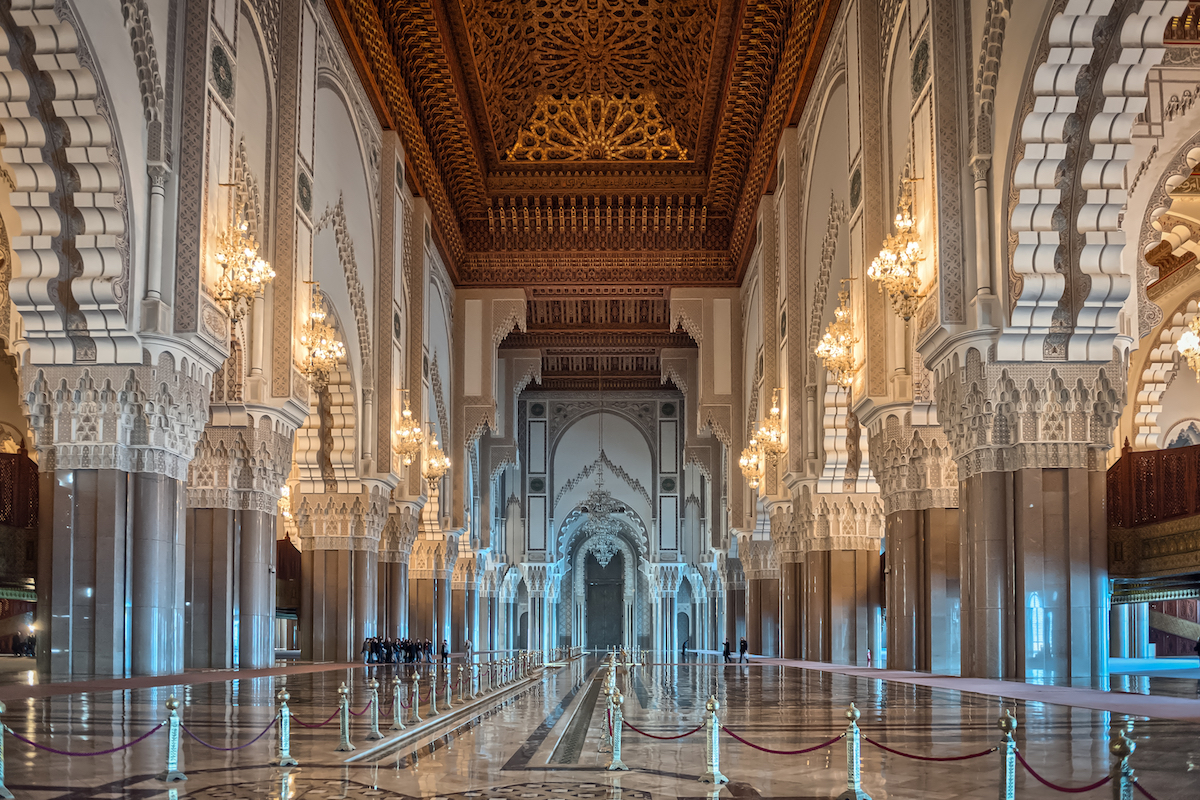
Hassan II Mosque in Casablanca, Morocco (Photo: Stock Photos from kicimici/Shutterstock)
Saint Petersburg Mosque
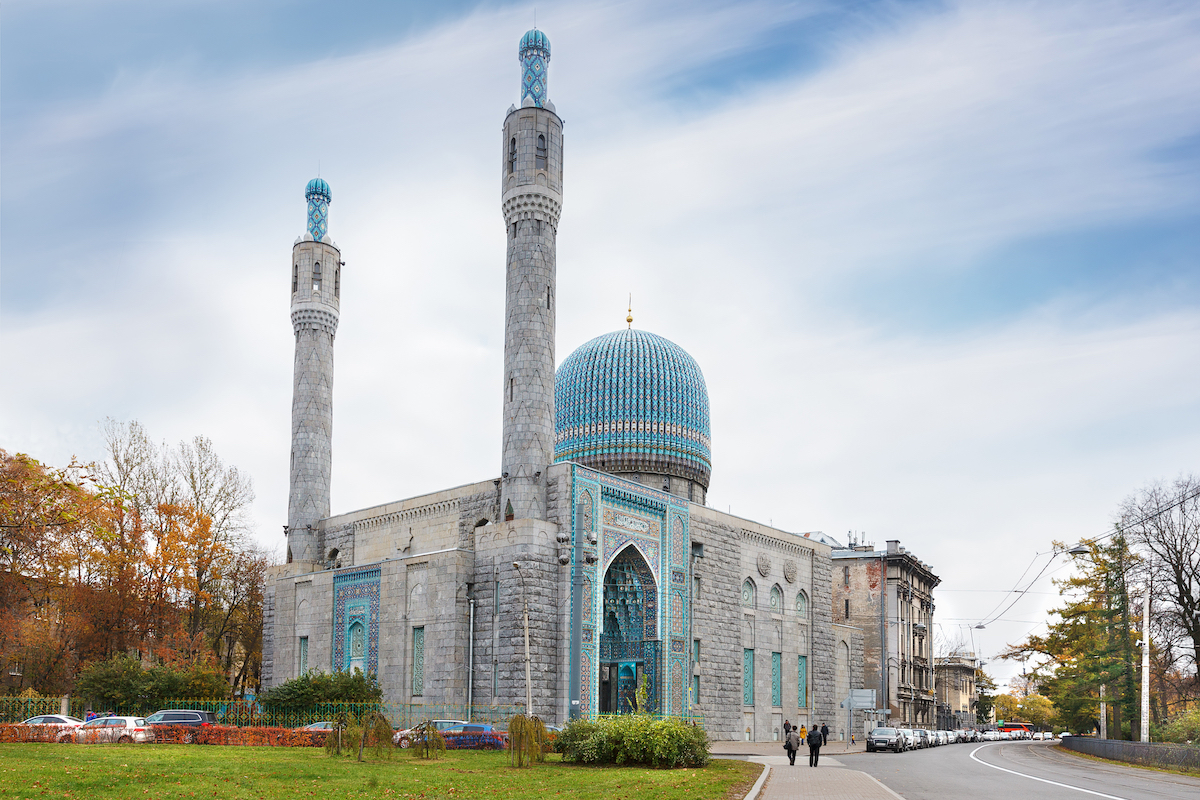
Saint Petersburg Mosque in Saint Petersburg, Russia (Photo: Stock Photos from Anna Pakutina/Shutterstock)
The design for Saint Petersburg Mosque was based on the tomb of Tamerlane in Samarkand called Gur-e-Amir which translates to “Tomb of the King.” This structure is an important piece of architecture that influenced many designers including Nikolai Vasilyev who designed the Saint Petersburg Mosque.
Opened in 1913, the mosque was a massively ambitious project that was capable of housing almost the entire Muslim population of Russia at the time. It was also the tallest European mosque outside of Turkey.
One of the most iconic features of Saint Petersburg Mosque is the bright blue ceramic tiles that adorn the dome and minarets. They are also used to create an impressive entrance at one of the portals, using detailed geometry and calligraphy that spells out verses of the Quran.
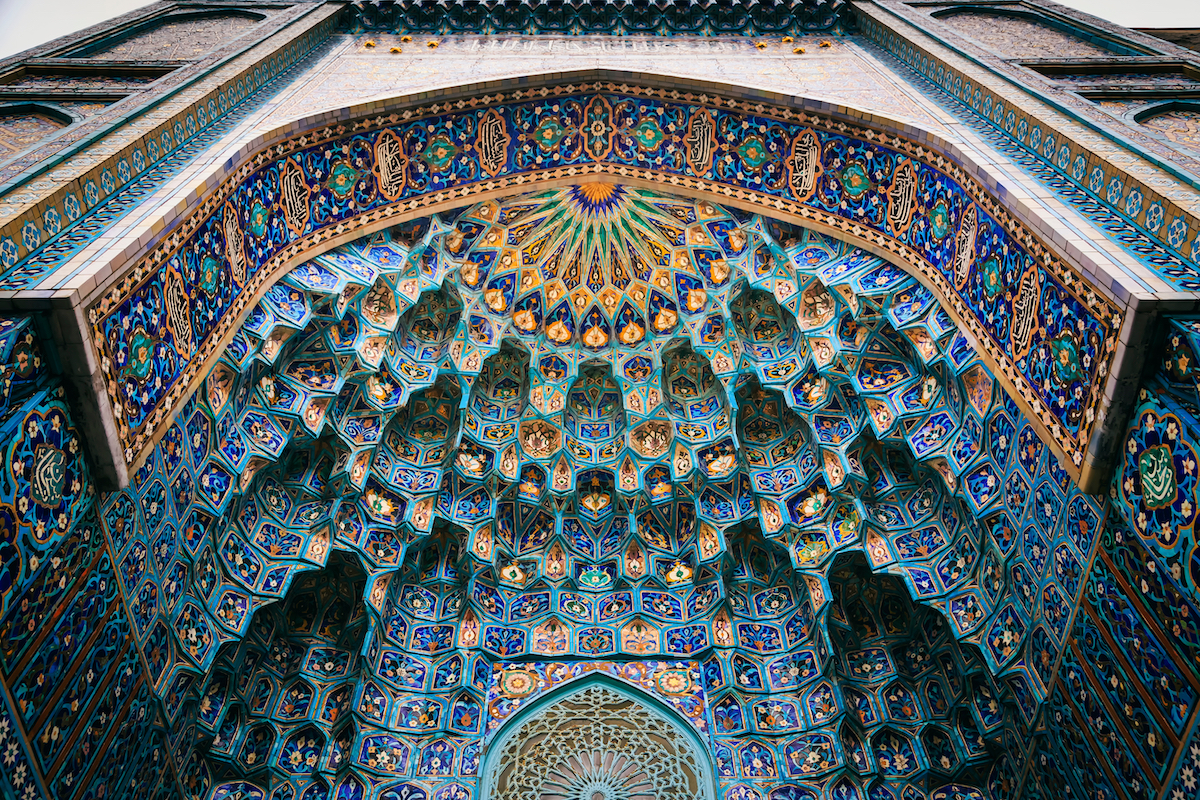
Saint Petersburg Mosque in Saint Petersburg, Russia (Photo: Stock Photos from witaya ratanasirikulchai/Shutterstock)
Putra Mosque

Putra Mosque in Putrajaya, Malaysia (Photo: Stock Photos from N_Sakarin/Shutterstock)
The Putra Mosque, located in Putrajaya, Malaysia, is part of a government area near Putrajaya Lake and Perdana Putra—a federal building that houses the executive branch of the Malaysian government and the prime minister of Malaysia. Putra Mosque is an important addition to this area of Putrajaya and reflects elegantly on Putrajaya Lake. (This government district sits just 25 miles from Kuala Lumpur.)
Putra Mosque is considered a unique place of worship and an important tourist destination in part due to its light pink color. Much of the building, including the expansive dome, is made out of pink granite. It is not the most famous pink mosque in the world, but it is a great example of a blend of Malay and Middle Eastern design styles.
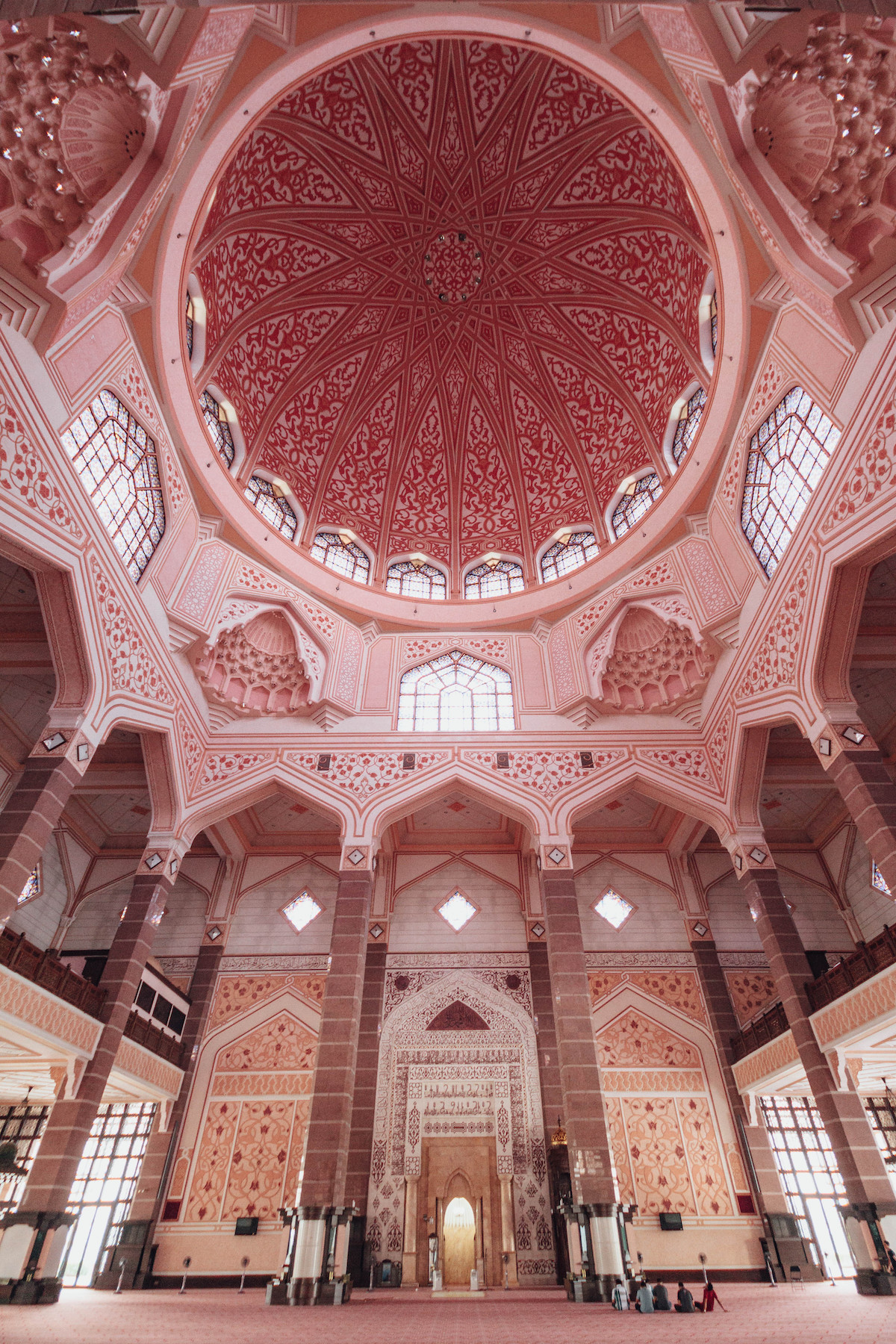
Putra Mosque in Putrajaya, Malaysia (Photo: Stock Photos from Artit Wongpradu/Shutterstock)
Crystal Mosque
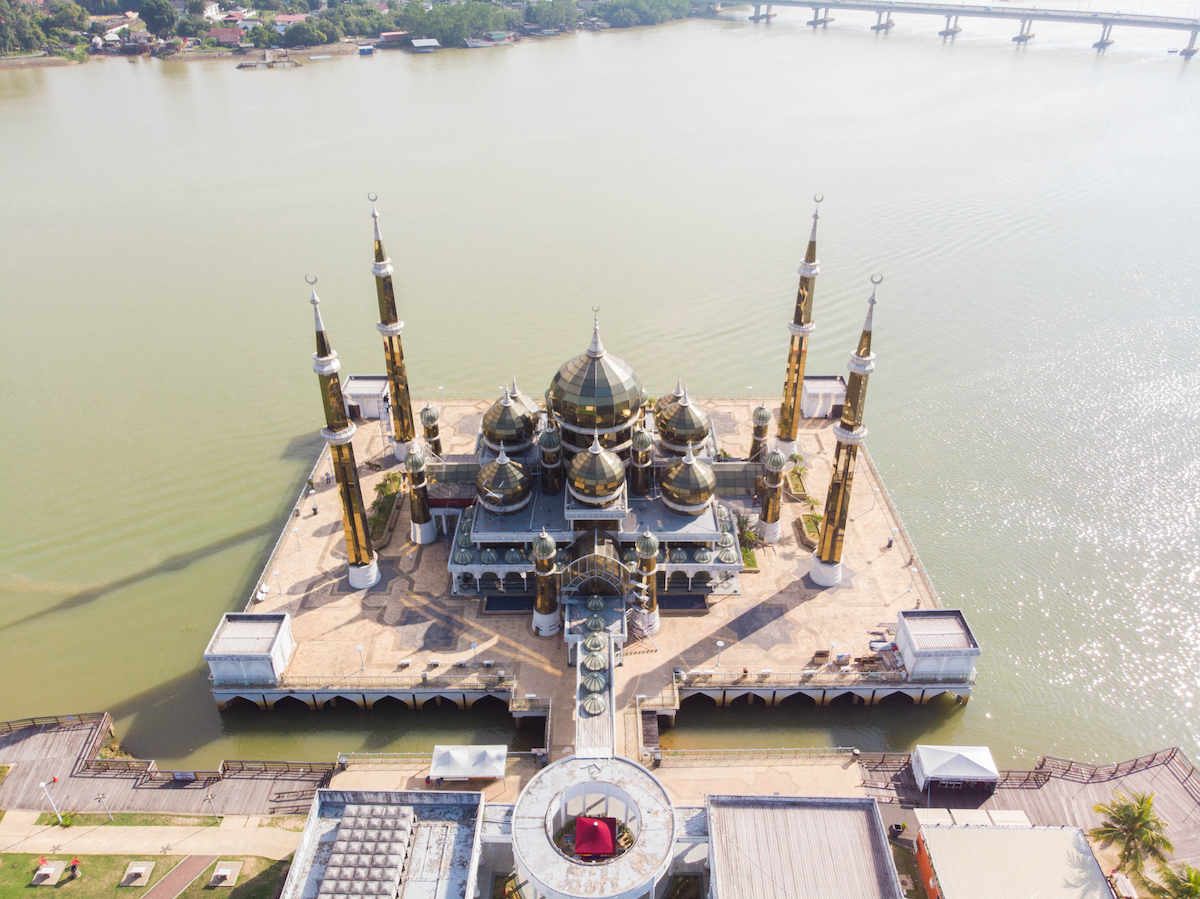
Crystal Mosque in Wan Man, Terengganu, Malaysia (Photo: Stock Photos from zulkamalober/Shutterstock)
The Crystal Mosque, or Masjid Kristal, is another mosque in Malaysia and is located in Wan Man, Terengganu. It is one of the most popular tourist destinations in the country. The Crystal Mosque earned its name and a place on this list for the unique color shows at night time made possible by the building’s steel, glass, and crystal construction.
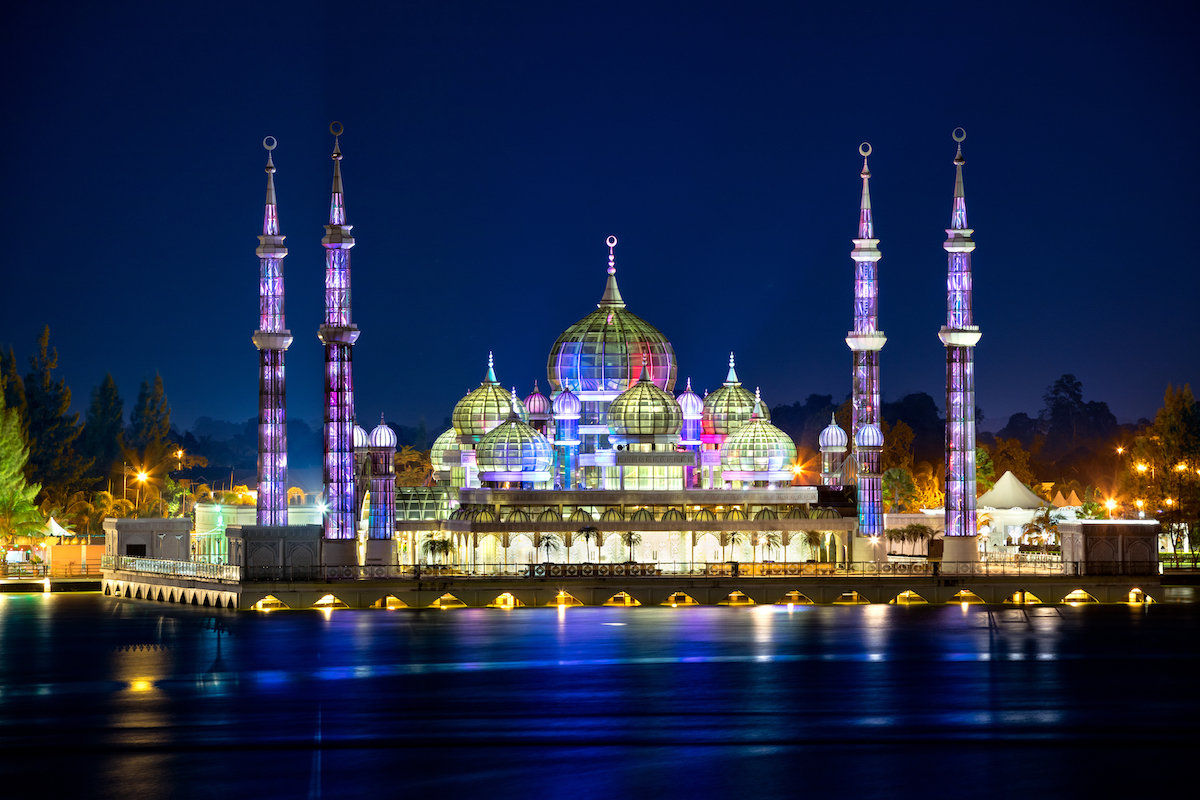
Crystal Mosque in Wan Man, Terengganu, Malaysia (Photo: Stock Photos from Patrick Foto/Shutterstock)











































































